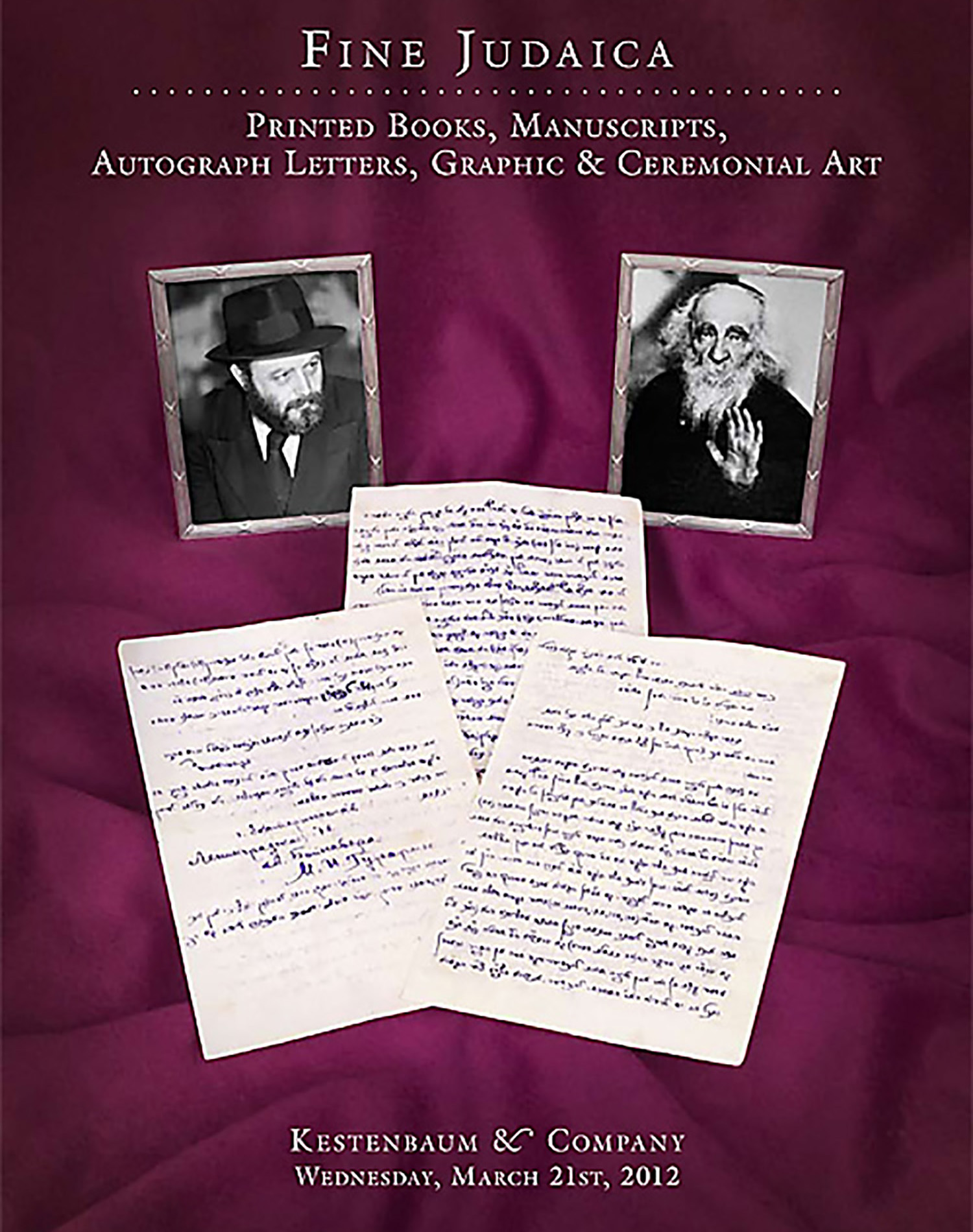Mishnah. Seder Taharoth. With commentary by Moses Maimonides (RaMBa”M).

AUCTION 54 |
Wednesday, March 21st,
2012 at 1:00
Fine Judaica: Printed Books, Manuscripts Autograph Letters, Graphic & Ceremonial Art
Lot 283
(MAIMONIDES, MOSES).
Mishnah. Seder Taharoth. With commentary by Moses Maimonides (RaMBa”M).
Naples: Joshua Solomon Soncino & Joseph ibn Peso 1492
Est: $15,000 - $20,000
PRICE REALIZED $17,000
This incunable belonged to and was studied in enormous depth by a 15th-century scholar, clearly of great wisdom. It is thoroughly replete with extensive marginal notes, numerous corrections to the text and manuscript diagrams, all in a clear Sephardic (Byzantium?) hand contemporary to the time of printing.
The first edition of the Maimonides Mishnah commentary to Seder Taharoth is known to have many errors and omissions and subsequent editions did little to correct the lacunae. The present manuscript supplies important corrections that do not appear in later printed editions. For example, this first edition does not contain a commentary to Mishnah 4 of Chapter I from Masecheth Machshirin. The manuscript adds an extensive commentary to this Mishnah. Although the Vilna and later additions also contain a commentary to this Mishnah, there are variances and different nuances in the wording of the translation found in these MS notes. Another example is a simple clarification by the important addition of just one word to the standard translation: The final Mishnah concerns the 310 worlds that will be given to the Tzadikim in the future. The standard text in the commentary reads “Mah sheyagia echad min hatzadikim” the MS adds the clarification “Lekol echad.”
Comparing the Maimondes commentary newly translated into Hebrew from the original Arabic (the Kappach and Korach editions), the present manuscript appears to be far more precise both in its corrections and additions to the commentary. Clearly, a far earlier and far more exact version of Maimonides’ commentary had been utililized by the unknown scholar/scribe here - possibly written at the time of the Rishonim and certainly not found in any other edition, manuscript or printed.
